Our Clothes are Sending Microplastics into Nature. Science and Industry are Gearing Up to Fight Back
January 2, 2023
Some of us may remember the bracing and virtuous feel of brushing our teeth or washing our face with pastes that seemed to contain a pinch of beach sand or salt; didn’t we feel cleaner than clean?
Well, remembering is all that’s left. Those toothpastes and skin scrubs did their work with tiny beads of plastic, very small and poorly understood pollutants that are moving by the tons into waterways, soil, animals, food, and our own bodies.
The Microbead-Free Waters Act of 2015 banned those tiny plastic beads from exfoliating scrubs and toothpastes, but that small action is just a grab at the lowest-hanging fruit of a global problem. The environmental threat of microplastics — created mainly by the breakdown of plastic waste — continues. In the past decade, scientists are working harder to capture, measure, and evaluate the danger of microplastics in places like Narragansett Bay.
Also, microplastic fibers, a worrisome subset of microplastics, have caught the attention of the textile industry, which brings the fibers into being, which now wants to find ways to capture and reuse them.
Microplastic is defined as any bits of plastic up to 5 millimeters in size. They can be spherical, jagged, or any random shape. They are created by the physical and chemical breakdown of plastic waste, and are found everywhere on Earth, including the depths of the oceans, on mountaintops, and in the flesh of animals and breast milk of humans.
It is estimated that 44% to 50% of sea birds, sea turtles, otters, and fish have eaten or been entangled in plastic debris. Research is looking at the internal damage to animals, especially sea life, that ingest plastic, and to the people who eat the animals that have plastic in their bodies. A related question is whether microplastics in the environment act as a vector to absorb and transmit bacteria.
Microfibers are defined as tiny slivers of material with a 1:3 ratio of width to length. Fibers are “shed,” or thrown off, textiles during the simple movements of using, wearing, and washing them. Besides clothing, textiles can include towels and linens, sails and rope, cigarette filters, face masks, and tire tread.
Natural fibers, such as cotton, linen, wool, and silk, shed their fibers, as do polyester, rayon, acetate, and all of the other mixes of synthetic fabrics that originate in an oil well.
Experts estimate that about 9 million metric tons of plastic enter the world’s oceans every year, according to Beyond Plastics. About 85% of microplastic waste in the environment is believed to be microfibers. About 100 million tons of textiles was produced across the globe in 2016, said Martin Bide, retired professor from the Department of Textiles, Fashion Merchandising and Design at the University of Rhode Island. Also in that year, he said, 62.7% of the global fiber market was polyester fibers.
As scientists troll the Earth’s waters for microplastics to document and study, people in the textile, fashion, and design industries are trying to come up with ways to collect waste plastic and, stated simply, to melt and then spin the plastic into filaments and fibers that are then used to weave new cloth.
This work to retrieve and reuse junk plastic is a variation of the reduce, recycle, refill, and reuse mantra that is aimed now at all forms of throwaway materials.
Microfibers, from natural materials like cotton and petroleum-based materials like polyester, enter the environment in a dizzying variety of ways, some more obvious than others. During normal wear and movement of clothing, sails, rope, and even cigarette butts, the fibers are shed into the environment. Fabrics that are tightly woven, with longer fibers, will shed less and more slowly. Short, loose-weave fibers shed quicker. In the world of microplastic fibers, one of the worst offenders is fleece, a plastic-based, fluffy cloth.
One of the major ways fibers enter the environment is via the rinse water of washing machines. Judith Weis, a retired marine biology professor from Rutgers University in New Jersey, has studied this phenomenon extensively. Wastewater that goes into public sewer systems is filtered out of the water and into a sludge, a byproduct of treatment. This filtering captures about 90% of microfibers, but, given the enormous volume of these fibers, that still leaves a lot of fibers in the treated water, which is eventually released into waterways.
More alarming, sludge may be spread on land, Weis said. If spread on farmland, it can enter farm crops through their normal uptake of nutrients from the soil. If spread on other lands, it can enter the bodies of insects, worms, and birds and into the open air.
“You have just moved the pollution from one place to another,” Weis said.
Scientists don’t know the effect of microplastics on animals, humans, or the environment. “We can only guess,” Weis said.
At URI, an interdepartmental group of about 50 academics are part of a “laboratory without walls” that is working on a variety of interdisciplinary tasks to understand and reduce this form of pollution. They are sampling the waters of Narragansett Bay, feeding microplastic fibers to oysters and sea urchins, figuring out how to convert plastic waste to fibers at market-competitive costs, and devising marketing strategies to educate the public and to persuade people to buy fewer and sturdier clothes.
In the business realm, Rhode Island Commerce has given a grant to U.S. Extruders in Westerly to experiment with creating plastic fibers from plastic fishing nets. A trade group, the Rhode Island Textile Innovation Network, is working with Polaris MEP, an industry consultant, to knit together the various players in the state that could help create a circular textile economy in which nature-harming plastic waste is captured and transformed into new products.
More than one observer has said this is fundamental work for the Ocean State. The Industrial Revolution was launched in America when Englishman Samuel Slater smuggled the plans for a textile mill out of England and built Slater Mill in Pawtucket in 1793. Now, more than 70 textile manufacturers are operating in Rhode Island, said Peter Snyder, vice president for research and economic development at URI.
Also, the health of Narragansett Bay and the wildlife it supports are a big concern for all Rhode Islanders.
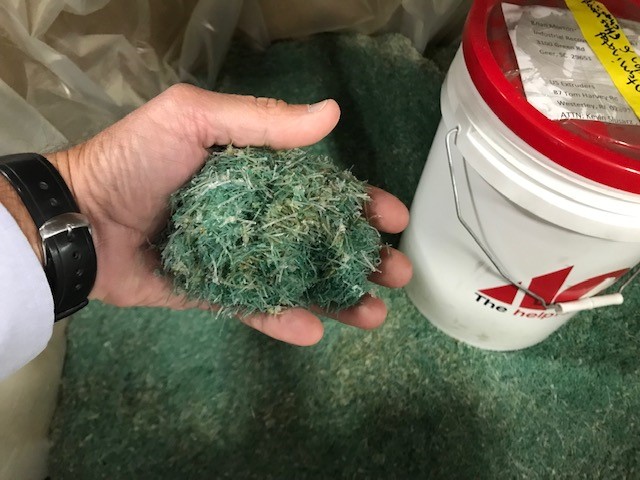
Bide, of URI, said the evolution of textiles as today’s new pollution worry — on scientists’ radar for only about a decade — follows the technical and economic trends at work in America across the decades. Up to the 1900s, textiles were made of natural fibers such as cotton and wool. The early 20th century brought the invention of synthetic nitrogen fertilizer, followed by nylon as the first oil-based synthetic fiber, then followed by polyester and other synthetic products.
The sequence continues through the 20th century with cheap oil for the creation of polyester, efficient machinery for making cheap fabrics, lots of garments sewn by low-wage workers in the Third World, leading to cheaper clothes and a fast-fashion industry that flogs consumers into more purchasing.
“Instead of buy, keep, repair, it became buy, throw away, and buy more,” Bide said.
The population of the United States has quadrupled since 1900, Bide said, while textile consumption has gone up 30-fold. At present, the global consumption of clothes is more than 30 pounds per person annually. In the United States, the figure is more than 100 pounds. Most of it is polyester.
Assistant professor Izabel Ciesielska-Wrobel of the textiles department at URI is working on a model of a solution under a project titled “Conversion of Plastic Waste into Economically Viable Filaments and Fibers.” The project got underway before she joined URI, while she was working for Luna Innovations of Virginia. Money from the U.S. Department of Energy got the project rolling.
At URI, Ciesielska-Wrobel’s project acquired a $186,000 micro compounder. The machine starts with waste plastic, then melts it and extrudes a very thin plastic filament. (Extrude is to create a product by pushing something through an opening. Imagine making homemade pasta, or the classic Play-Doh toy in which a load of Play-Doh in a hopper is pushed through a panel of cut-out shapes.)
Of course, the process is not that simple, partly because of the variety of polymers and additives in any plastic. “Some materials are immiscible” into the process, Ciesielska-Wrobel said, “so you have to use a lot of chemistry to make them miscible.”
“This machine offers a lot of possibilities,” she said. “Also, we are adding features to the materials to make them more interesting to potential customers.” In fact, she offers some of her monofilament product to use in 3D printing.
Ciesielska-Wrobel said there is a lot of interest in the business world in converting waste plastic to usable filaments and fibers. She has worked to some degree with OceanWorks, a California-based company with an office in Boston, which, she said, collects trash plastic from all over the world, and then separates and processes it into usable plastic pellets. She said it is hard to get in touch with OceanWorks in recent months, implying to her that its business is booming.
“My goal is to promote this idea everywhere and to try to apply it in every possible way that I can,” she said.
Similar experimentation — through a project called “Fishing for Solutions” — is now going on at U.S. Extruders, with support from the $43,000 Commerce grant. The company builds extruding machines that, in turn, are used by other manufacturers to extrude products, such as medical tubing. Business development officer John Riendeau said the company’s owner, Dan Schilke, was disturbed by the low level of recycling in the United States and decided to work on a solution.
The company decided, Riendeau said, “to do a small representative example of recycling something that has not been recycled in the New England area in the past” — that is, fishing nets, which are mostly plastic except for some removable elements of steel and rubber.
“The idea was to take an end-of-life product and turn it into part of the circular economy,” he added.
U.S. Extruders obtains scraps of fishing nets from Superior Trawl and Trawlworks, net manufacturers in Narragansett, that are byproducts of production. The process includes separating the steel and rubber, cleaning the nets, shredding and granulating the plastic, and producing plastic pellets to be sold to a variety of manufacturers of all kinds of products. The crucial question, Riendeau said, is whether the cost of producing the recycled plastic can compete with the cost of making and buying virgin plastic.
Study of the quantity and effect of microplastics in the environment is relatively young, and scientists, including marine biologists, are working with special logistical problems.
Andrew Davies and Coleen Suckling are associate and assistant professors, respectively, at URI, and they are studying plastic particles in Narragansett Bay through the Ocean State Initiative for Marine Plastics.
A 2020 Rhode Island Sea Grant project has allowed them to do surface trawling of the bay. The work is challenging, said Davies, because of the many different types of particles in the water, including plastic, that create a “noisy matrix” that is hard to sort through. Also, different plastics have different densities and may behave differently in water. At this early stage, their research has yielded few conclusions.
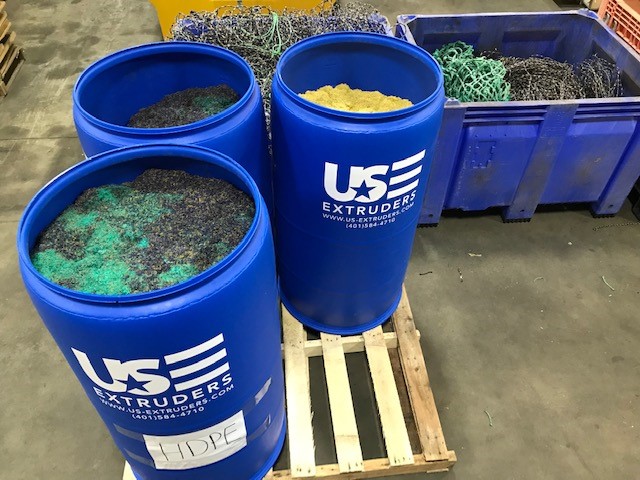
Scientists also are studying the presence of microplastics on the floor of the bay, in sediments, which ultimately capture an estimated 70% of all microplastics that enter waterways, according to Kay Ho, research scientist for the Environmental Protection Agency who is working on sediment research in Narragansett Bay. Ho said marine scientists find microplastic sediments “everywhere we look,” but the effects of this pollution are still mostly unknown.
Weis, of Rutgers University, said the science of collecting and analyzing microplastics and microfibers in the environment is fraught with difficulties and inconsistencies. In a paper Weis co-wrote with Francesca De Falco, a member of the School of Biological and Marine Sciences at the University of Plymouth in England, Weis found some researchers collect samples with types of nets that allow long thin fibers to escape, resulting in a serious undercount of fibers. “Grab samples” of whole water might get a more accurate count, but they cannot be usefully compared to samples captured in nets. Laboratory studies that use purchased samples of microplastic beads mismatch, in several ways, the conditions in the natural environment.
Some actions that Weis and De Falco recommend to capture microplastic fibers from just the limited world of clothing would require a lot of consumer education and behavior change. These would include buying clothing with tight weave; washing clothes in full loads, preferably in a front-loading machine (to reduce agitation); using less detergent; drying clothes on a line instead of in a clothes dryer. Washing machines with built-in filters that can capture microfibers do exist, and, in fact, will be mandated in all new washing machines sold in France in the next few years. Meanwhile, these fine-grain filters can be purchased and retrofitted onto existing washing machines, Weis said. One product is the Lint LUV-R.
Karl Aspelund, associate professor and chairman of the Department of Textiles, Fashion Merchandising and Design at URI, emphasized that all the initiatives described here — from combing the bay floor to spinning recycled plastic into yarns — are things that professionals already know how to do.
“We don’t have to invent anything to make all of this happen,” Aspelund said. “This is not something we have to come up with.” The task, which URI is helping to work on, is “getting people to start working together.”

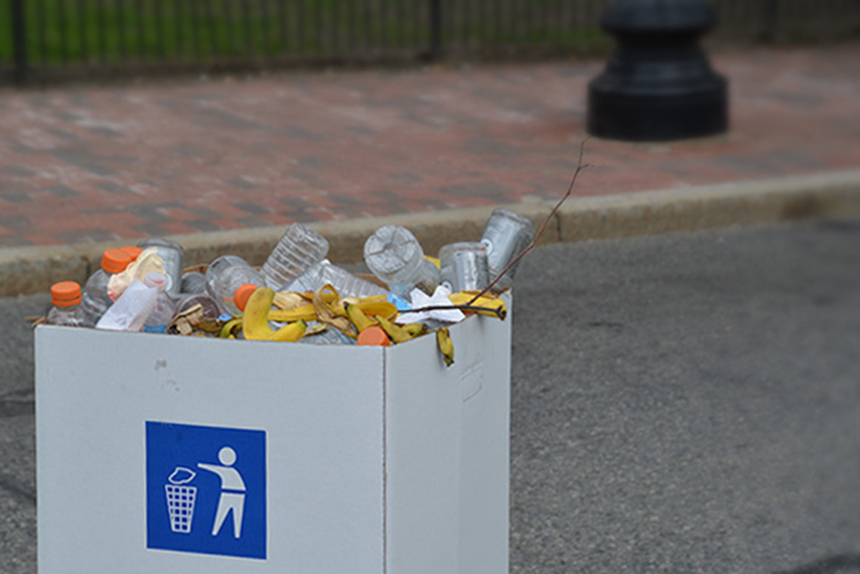
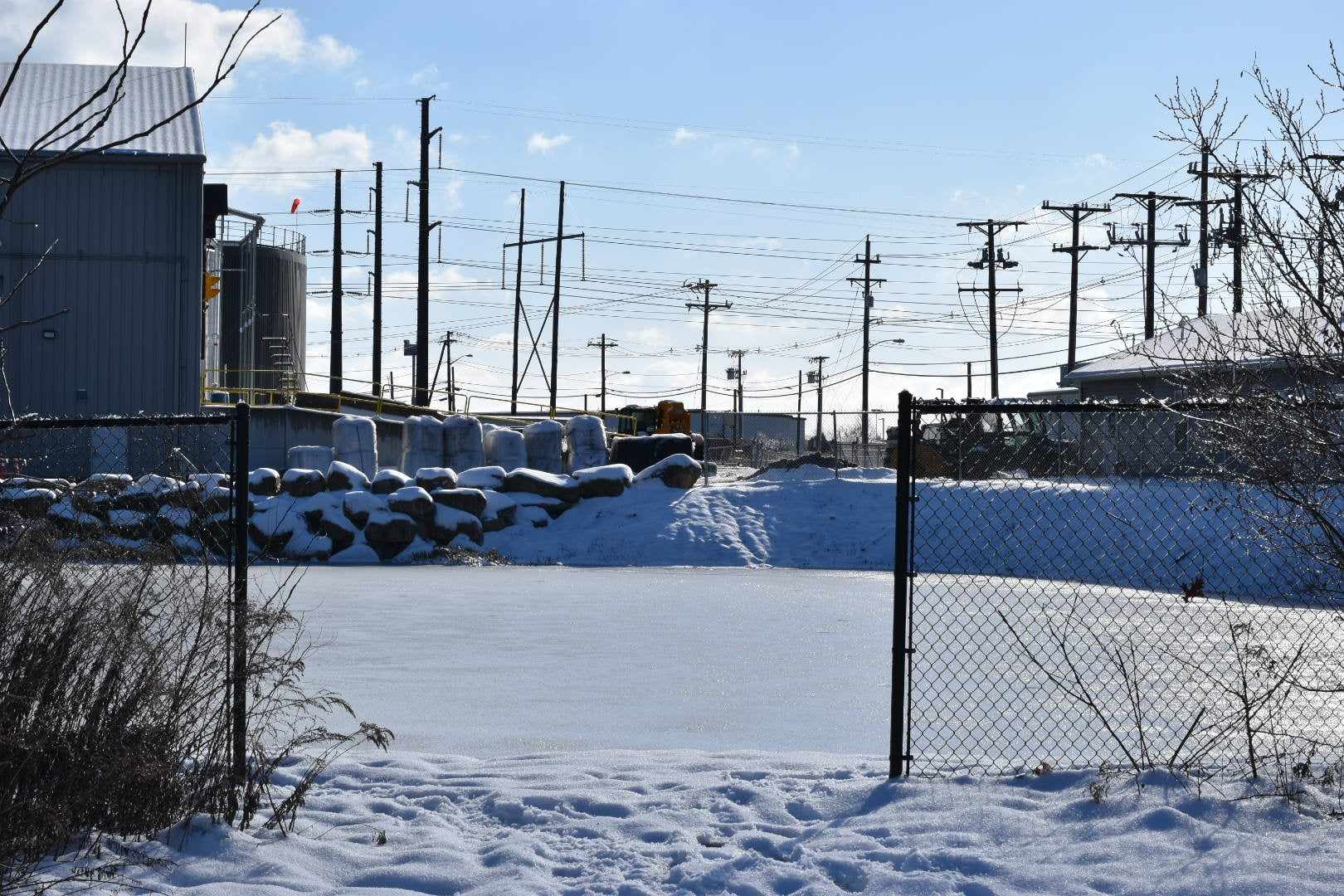
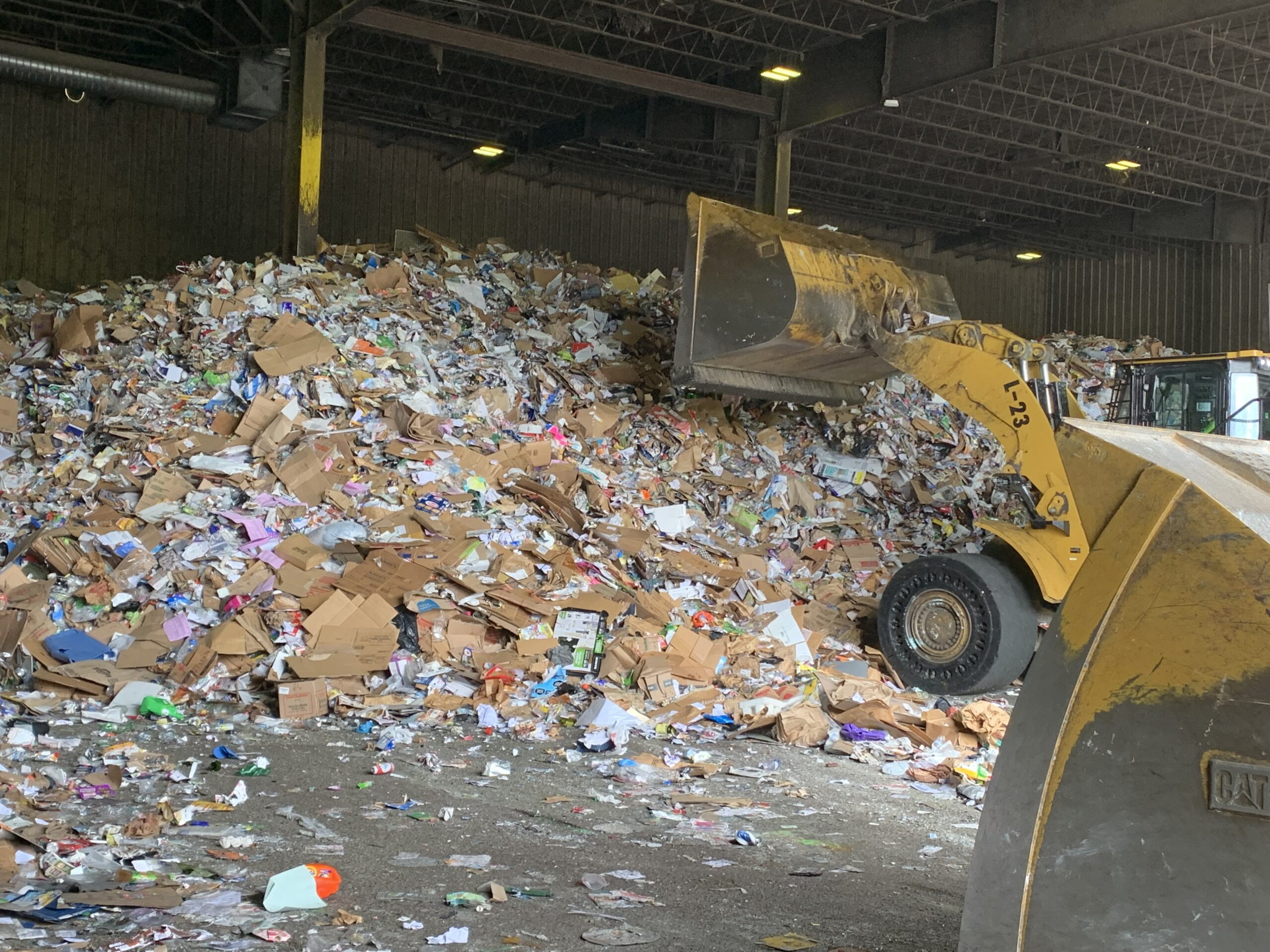
This is an extremely well written article well researched and very comprehensive.
https://www.sustainthemag.com/style/is-recycling-plastic-into-textiles-really-the-best-option Must READ!!! It notes, “recycled polyester decomposes and breaks into microplastics and microfibers easier and faster than virgin fabrics”, etc. .
https://www.sciencedirect.com/science/article/abs/pii/S0959652620344000 Plastic in asphalt ???? Meanwhile I find it troubling that asphalt was used along the Blackstone River instead of using crushed stone that is on the Holliston, Ma Rail trailhttps://www.metrowestdailynews.com/story/news/2021/12/28/holliston-rail-trail-built-hiking-and-biking/6434097001/ .
https://www.americantrails.org/resources/the-art-of-building-crushed-stone-trails
https://www.nortonpoint.com/pages/about-us Locally made Sunglasses made from beach litter.
https://www.maineropemats.com/ Fishing rope made into doormats.
https://storymaps.arcgis.com/stories/ada310a046d74b5fbbd14e7846ba4814 Interesting approach down in Florida. ???
Very useful information in this article regarding the type of clothing to avoid buying and measures that can be taken to minimize the impact of clothing currently owned on spreading microplastics. I certainly will focus on buying natural fibre clothing. I have purchased clothing made with bamboo fabric that is quite comfortable. It still has about 5% plastic based material, but hopefully can eliminate plastic entirely in the future.
Concise explanation of simple measures consumers can practice; but only if they are EDUCATED!
Can the URI team hold information sessions on local college campuses and libraries?
Earth Day Events are being planned NOW!
Is there a speaker available to come to our Earth Day Fair in Jamestown?
Please contact me, Paula Shevlin
[email protected] Thank you
I’m an average consumer who purchased a new washer not too many years ago. At that time I asked the salesperson about a filtering system for the wastewater, more because I had questions about what was going into my septic system…or remaining somewhere within the washer, than a concern about plastics in the wastewater. The response by the salesperson was that filters were not an option. Unfortunately I did no further research. Now, reading about devices that might be fit to my washer (Lint LUV-R?) along with the threat of adding more plastics to the environment, I’m encouraged to investigate further. Thank you for this lead.